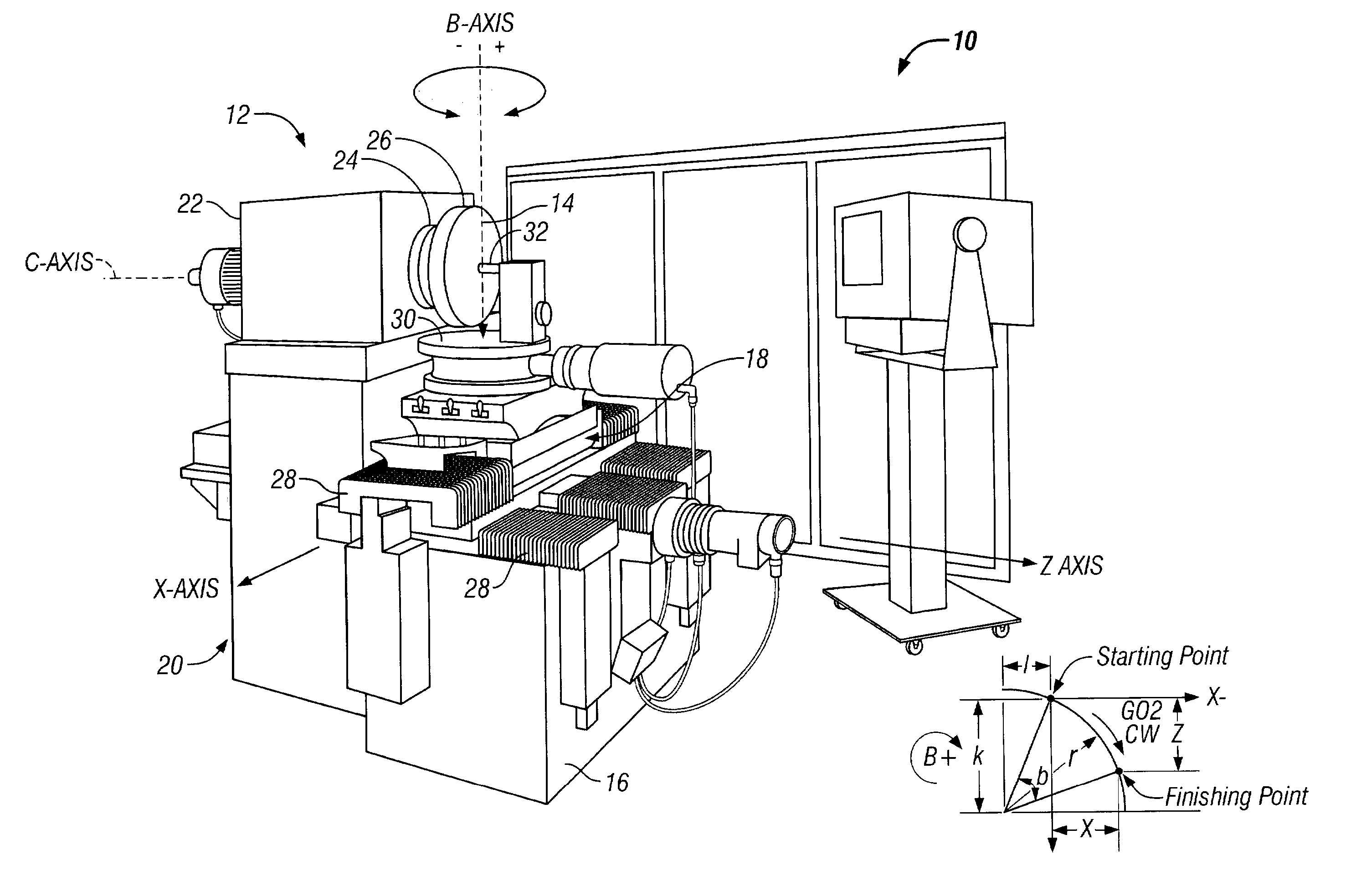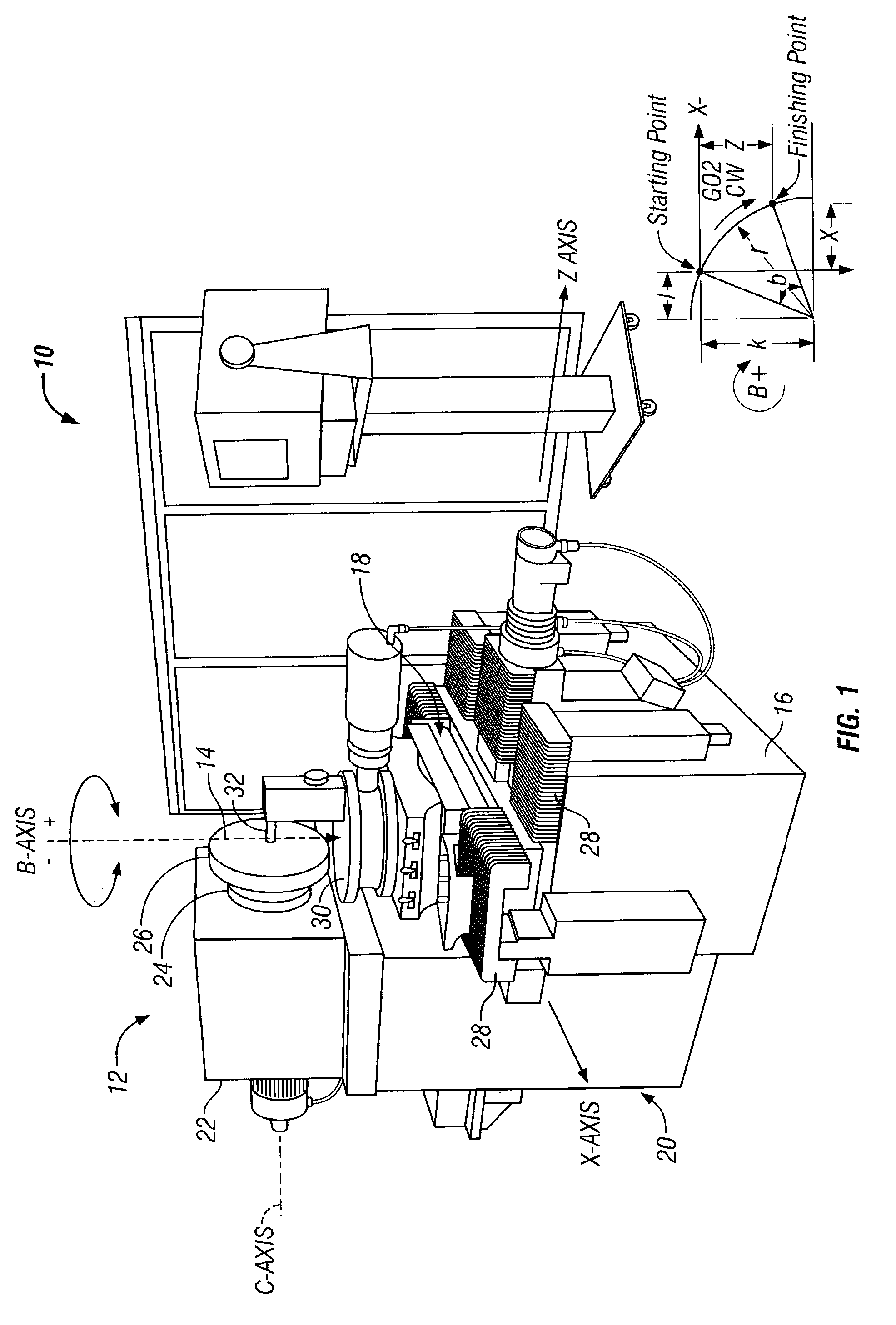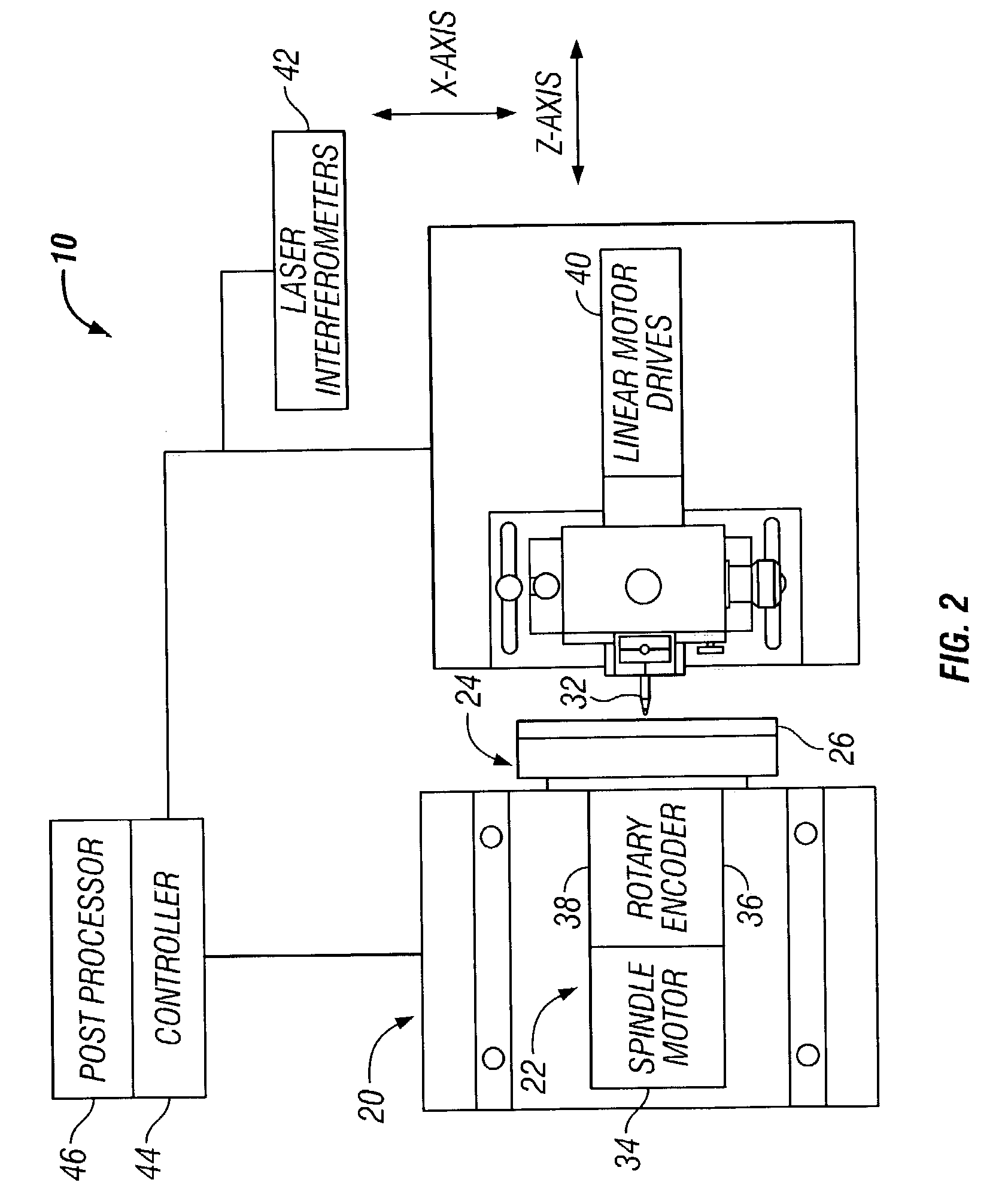System and method for forming a non-rotationally symmetric portion of a workpiece
a technology of non-rotational symmetry and workpiece, applied in the direction of process and machine control, process control, instruments, etc., can solve the problems of excessive heat generation, vibration, and the use of fast tool servos, and achieve the effect of reducing the number of servos and generating the maximum number of servos
- Summary
- Abstract
- Description
- Claims
- Application Information
AI Technical Summary
Benefits of technology
Problems solved by technology
Method used
Image
Examples
Embodiment Construction
[0019]The system of the present invention is shown in use in FIG. 1 with an exemplary machine for forming shaped workpiece surfaces. The system 10 comprises a diamond turning or grinding machine 12 that is provided with associated programming instructions and controls to facilitate the fabrication of an axis asymmetric portion of a workpiece surface 14. The machine 12 generally has a base 16 upon which a platform 18 is slidably mounted and a spindle base 20 upon which a spindle assembly 22 is rotatably mounted. The spindle assembly 22 has a workpiece chuck 24, such as a vacuum chuck, for securely holding a workpiece 26 for rotation. Preferably, the chuck 24 rotates about a horizontal c-axis. The platform 18 of the machine is movable along linear slides 28 that extend along horizontal x- and z-axes orthogonal to one another, the z-axis being parallel to the c-axis. A table 30 is mounted to the platform 18 and one of a working tool 32 (e.g., a diamond cutting tool) or grinding spindle...
PUM
| Property | Measurement | Unit |
|---|---|---|
| Angle | aaaaa | aaaaa |
| Symmetric field theory | aaaaa | aaaaa |
Abstract
Description
Claims
Application Information
 Login to View More
Login to View More - R&D
- Intellectual Property
- Life Sciences
- Materials
- Tech Scout
- Unparalleled Data Quality
- Higher Quality Content
- 60% Fewer Hallucinations
Browse by: Latest US Patents, China's latest patents, Technical Efficacy Thesaurus, Application Domain, Technology Topic, Popular Technical Reports.
© 2025 PatSnap. All rights reserved.Legal|Privacy policy|Modern Slavery Act Transparency Statement|Sitemap|About US| Contact US: help@patsnap.com



